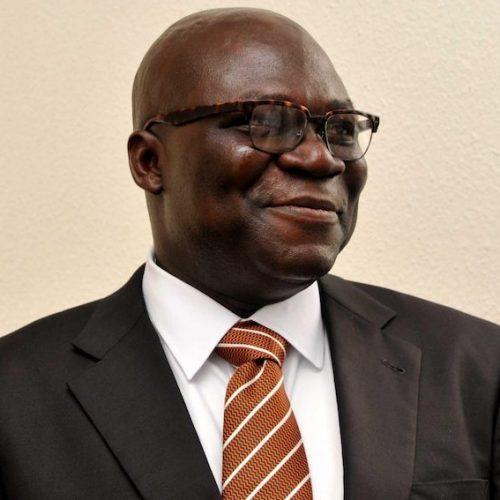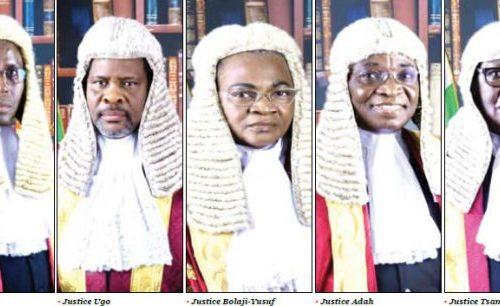ijeoma.nwogwugwu@thisdaylive.com
The new Minister of Power, Mr Adebayo Adelabu, has been flexing his muscles in the Nigerian Electricity Supply Industry (NESI). Just a few days ago, he told energy reporters at a media briefing that the federal government had no intention of implementing an electricity tariff hike. According to the former banker and Central Bank of Nigeria deputy governor-turned-politician, the timing for a tariff hike was inauspicious due to the increase of petrol prices a few months ago, the devaluation of the naira, persistent demand pressure on the foreign exchange market, and the impact both policies have had on inflation.
Adelabu went on to give his perspective on the privatisation of the power sector ten years ago, noting that he would have preferred that the sector was commercialised, if had a say in the power sector reform process. He said most countries that have used their power sectors to drive (grow) their economies do not hand it over to the private sector but recognise the inputs of professionals in the sector through collaboration. According to the minister, it was mainly governments that drive the kind of long-term investments required in power infrastructure. To cap his pronouncements, Adelabu revealed that that the federal government will review the five-year extension of the licences held by the whipping boys in the electricity value chain – the Distribution Companies (DisCos) – which in his estimation would be better off fragmented into franchises so that they can better manage their jurisdictions.
Well, based on Adelabu’s comments on the power sector and desire by government to keep kicking the proverbial can down the road as it relates to electricity pricing, concerns have grown that he is about to join a growing list of power ministers, starting from Babatunde Fashola in 2015, with no inkling of the penkelemisi in the Nigerian Electricity Supply Industry. If I may digress: Adelabu’s grandfather, Gbadamosi Adegoke Adelabu the illustrious Ibadan politician who died in his prime in a car accident in 1958, has been credited with giving expression to the phrase “peculiar mess” in Nigerian folklore. In a speech, he had used it to describe the intransigent opposition in the Western Region House of Assembly in the mid-1950s. Not understanding what he meant, the non-literate section of his audience corrupted the phrase to penkelemesi.
Anyway, starting with Nigeria’s electricity market structure, Adelabu must realise that several emerging markets such as Egypt, Morocco and India, which recently commenced the privatisation of centrally run and state-owned distribution assets after the passage of the country’s new Electricity Act in 2022, actually encourage private sector participation in lock step with government investments in their power sectors. In fact, prior to the enactment of the new electricity legislation, India’s Electricity Act of 2003 helped to attract massive private sector investments in the country’s hydro, coal and renewable energy projects, making India a next exporter of electricity today. So, it is not entirely correct for Adelabu to claim that only government investments in the electricity sector can drive economic growth.
Besides, if he had spent a little more time familiarising himself with the sector that he is supposed to be superintending, he would have been privy to the fact that the National Electric Power Authority (NEPA), before its transformation to the Power Holding Company of Nigeria (PHCN), had been commercialised by the Technical Committee on Privatisation and Commercialisation (TCPC) under the military administration of General Ibrahim Babangida. Yet, NEPA remained a poorly funded, vertically integrated company with high aggregate technical, commercial and collection (ATC&C) losses that rendered it impossible to provide stable power to electricity consumers. But it must be acknowledged that the unbundled electricity market structure that we have today has not fared any better than NEPA and its successor company, PHCN.
Notwithstanding the unbundling of PHCN’s assets in 2012 and their privatisation a year later, Adelabu needs to be reminded that the federal government is still in the commanding heights of investment and ownership of power assets in the country. Not only are the Transmission Company of Nigeria, its entire grid and control centres under federal government control, government also owns the Niger Delta Power Holding Company (NDPHC) – owner of at least 10 completed and semi-completed thermal power plants, of which just one generates electricity and is connected to the grid. The inability of the other nine NDPHC power plants to evacuate electricity into the grid effectively means that about 7,500MW of Nigeria’s total installed generation capacity has remained stranded for almost a decade. This has been attributed to the lack of gas supply to the said plants or connectivity to the grid. Or is the minister afraid to interfere in NDPHC, which by statute must be chaired by the Vice President of Nigeria?
In addition, Adelabu’s immediate past predecessor in the power ministry, Abubakar Aliyu, informed the public last May that the 700MW Zungeru hydroelectric power plant had been completed, connected to the grid, and was awaiting commissioning. Then there is the Rural Electrification Agency under the supervision of his ministry and the Presidential Power Initiative (PPI) in conjunction with Siemens AG which was one of the main topics that came up for discussion between President Bola Tinubu and German Chancellor Olaf Scholz, when the latter came visiting about two weeks ago. From what I can tell, the PPI being driven by Siemens is presently under review and will be subsumed under a transformation plan that will be inaugurated before the year ends or early next year.

It is evident form the list above that Adelabu has more than enough government-controlled assets, projects and agencies to keep him busy as minister. The same applies to his primary mandate of formulating policies that can improve electricity output and investment in the power sector. His fixation with the DisCos and their licensing regime is therefore baffling to say the least. Moreover, the licensing of power sector companies falls strictly under the purview of the Nigerian Electricity Regulatory Commission (NERC), which on paper is supposed to be independent and devoid of ministerial interference. It is NERC that licenses and relicenses all DisCos, GenCos, the TCN, System and Market Operators, the Nigeria Bulk Electricity Trading Plc (NBET), and independent power producers in the country. If the regulator has any issues with the companies it has licensed, it has the powers to deal with and address such issues as they arise, not some meddlesome interloper in the power ministry.
Even if any of the DisCos was insolvent and badly managed, surely Adelabu must know that ridding such a company of its licence does not remedy whatever problem it may have because once this happens, the DisCo shall cease to operate. At the very worst, NERC can step in to take over any distressed DisCo and seek to change its management and ownership by inviting new investors to acquire the DisCo, but it will never withdraw the company’s licence to operate. As things stand, four of the 11 DisCos that were privatised – Ibadan, Benin, Kaduna and Kano – have been taken over by commercial banks over their inability to service the loans extended to them by the lenders. If it is the minister’s wish to delicense the four DisCos, or any other DisCo for that matter, is the federal government willing and able to repay the banks and investors currently in control of the DisCos, or even adequately fund their distribution network upgrades and rollout in the event of government take over?
Yola DisCo, for instance, should serve as a cautionary tale for any person in charge of the power ministry. Though its licence was never withdrawn, the initial core investors that acquired it in 2013 were forced to return the company to the federal government a year-and-a-half later after they discovered that its coverage area which had been overrun by Boko Haram terrorists, had rendered their investment in the DisCo untenable. To date, Yola DisCo which until two years ago remained in the hands of the federal government is unarguably the worst performing distribution utility in the country with ATC&C losses of 73.04% and 67.87% in the third and last quarters of 2022. As of January 2023, Yola Disco was only able pay a measly 12% of the value of NBET’s invoice for the month. This is despite the fact that Yola is issued the least market invoices (minimum remittance obligation, MRO) by NBET monthly. Mind you, this excludes invoices issued by the Market Operator.
Other DisCos with elevated ATC&C losses in Q3 2022 and Q4 2022 included Kaduna, Kano, Ibadan, Jos, Benin, Port Harcourt, Abuja and Enugu. Only Eko and Ikeja DisCos – both Lagos based – have managed to keep their ATC&C losses at 25% and below. ATC&C losses matter because they are critical to low or high electricity tariffs as they provide insight into the integrity of the distribution network and the revenue billing and collection efficiency of the utility. ATC&C losses reflect the difference between the amount of electricity DisCos receive from the transmission grid and the amount of electricity for which they invoice their customers, plus the adjusted collections loss. The higher the ATC&C losses, the lower the revenue and the higher the tariff required to cover the cost of supply. Conversely, the lower the ATC&C losses, the higher the revenue and the lower the tariff required to maintain a reasonable return on investment. Therefore, reducing ATC&C losses by DisCos is a key strategy for improving the financial viability and sustainability of the electricity sector.
Likewise, the minister should take a cue from other regulated sectors such as telecommunications and banking where the primary objective of regulators in these sectors is to preserve and save any of the troubled businesses they regulate, not withdraw their licences. The primary concern for such regulators is to ensure that telecom subscribers and bank depositors are not adversely affected by distressed operators in both sectors.
On Adelabu’s comment on the franchising of DisCos’ coverage area, I was under the impression that this was already in place as a regulatory policy. NERC in June 2020 officially introduced sub-franchising by electricity DisCos as a model to improve access to safe and reliable electricity services in communities that are underserved and unserved. DisCos can sub-franchise territories under their control by authorising a third party to provide electric distribution utility services on its behalf in a particular area within the DisCos’ area of supply. When NERC introduced the model, it sought to break the monopoly enjoyed by DisCos as electricity distribution network providers. According to NERC, proposals for the franchising arrangement can either be initiated by DisCosor customer groups (or communities) within a specified geographical boundary. Such communities, through registered associations, may formally approach a DisCo to declare their interest and initiate franchising arrangements in the areas of supply, metering, billing and collection, including additional investment in the distribution network where appropriate.
Despite its introduction three years ago, no effort has been made NERC to encourage or facilitate sub-franchising by DisCos which have deployed territorial tactics to retain their coverage area, even where they have failed to provide electricity in an efficient and consistent manner. But this is where Adelabu can come in from a policy perspective by sitting down with NERC, the Bureau of Public Enterprises and the banks, to consider balkanising some of the DisCos in the hands of banks along state lines and reselling them to new investors. With the passage of the Electricity Act, 2023, state governments can then acquire a minority stake in emerging smaller DisCos and implement policies that facilitate distribution network infrastructure rollout and metering in more communities.
The same model can be considered for TCN, which remains centralised despite its inability to wheel out more than about 5,200MW of electricity due to limited transmission lines. However, the privatisation model to be deployed for TCN assets should be carefully assessed as transmission networks generally fare better when they are concessioned to private sector operators, rather than sold outright.
Of bigger concern, however, is the issue of illiquidity in the power sector. To his credit, this is one area that Adelabu has harped on repeatedly since he assumed office. Yet, he foreclosed for now the issue of a tariff review until economic conditions improve. While I perfectly understand the reluctance by government to bite the bullet and introduce cost-reflective tariffs at this time, my bigger worry is that the power sector is being dragged down a similar path as the downstream petroleum sub-sector where fuel subsidy removal has defied all attempts to eliminate it and has entrenched institutional corruption and inefficiency on a grand scale, especially in the Nigerian National Petroleum Company Limited. As of December 2022, the CBN had plunked down more than N2 trillion, comprising about N500 billion as intervention funds to the DisCos and utilizing the balance to subsidise electricity generation. With the spike in gas prices which are invoiced in dollars by oil and gas suppliers to the GenCos, the recent naira devaluation and rising inflation, it is estimated that government currently owes the GenCos another N2.5 trillion.
It is apparent that the current market structure and under-recovery by the Discos has pushed the entire NESI to breaking point. In the absence of cost-reflective tariffs, all 11 DisCos are technically insolvent, unbankable and unable to raise fresh equity and debt from other investors, debt and equity markets, and from commercial lenders respectively. Naturally, the liquidity constraints experienced by the DisCos impact on their ability to meet their MROs to NBET and the Market Operator, much less meeting their operating and capital expenditure requirements. The inability by DisCos to settle market invoices is also impacting on the fortunes of TCN, GenCos and gas suppliers. Is it any wonder that cumulatively, ATC&C losses stood at 44.15% in Q4 2022 and that the power sector privatisation had failed to meet its desired objectives?
Yet, is the implementation or introduction of cost-reflective tariffs the real panacea for all of the sector’s woes as market participants have made us to believe for several years? In a paper presented by Ebipere Clark at the NESI conference held recently to mark 10 years of power sector privatisation, he was of the view that the transaction design for the process was flawed from the outset. He said even though the goals of the privatisation process were aimed at private sector financing and management, which would in turn was meant to increase energy volumes to meet latent demand, and the electricity needs of underserved and unserved Nigerians, the fact that the entire success of privatisation transactions was anchored on cost-reflective tariffs spelled doom for operators and the entire process.
According to Clark, the DisCo assets that were privatised were handed over to new investors with negative free cashflows, irrespective of the fact that PHCN’s liabilities had been removed from the balance sheets of the privatising entities and only core assets left behind. However, the privatisation rules forbade the new investors from using these assets as collateral to raise money from debt markets. With the negative free cashflow on the books of the of the DisCos and the constraints imposed on them to raise capital to improve their networks, they were set up for failure from the get-go.
Clark went on to say that under the tariff design framework, electricity customers were expected to pay for everything, even in the face of massive electricity theft and defaulters that the new investors had inherited. Furthermore, large customers such as commercial and industrial consumers were expected to cross-subsidise smaller customers, though they lacked economies of scale and many of which have been forced to opt out of the inefficient grid to generate power for themselves via liquefied natural gas or compressed natural gas power facilities. Clark said commercial and industrial customers consider the increase in reliability and service delivery from off-grid power generation, worth the marginal increase in price. He also blamed NERC for removing the fixed charge in 2015, which was imposed by DisCos in their billing invoices, wondering how sector CAPEX was to be paid. The result of ten years of misaligned incentives, Clark added, led to the activation of a DisCo doom loop, and described the current arrangement as the privatisation of management, but the nationalisation of funding for the power sector.
As far as Clark was concerned, market illiquidity in the power sector has been caused by the absence of working and investment capital in DisCos, noting that the transaction design precluded risk capital to underwrite the businesses that were being privatised, while the tariff design precluded debt capital to deliver loss reduction. As for the GenCos, there was no effective capital in NBET, just as government failed to introduce a policy that altered the transmission of wholesale prices to the retail market, among other issues identified by Clark. In terms of the remedial actions taken by government and the CBN to support NBET and the senior debt capital provided to the DisCos, these measures, he said, were temporary and unsustainable, as the interventions had failed to address the need for long-term capital for DisCos with a credible path to repayment. He further noted that changing the majority shareholders of DisCos would not solve anything if there is no additional capital, as a shareholder change can result in an increase in ATC&C losses as was the case with Yola DisCo.
In his recommendations, Clark suggested that DisCos need to be recapitalised by raising their minimum capital requirements. But for DisCos to raise fresh capital, markets must have minimal confidence in NESI policy and regulation. Cost-reflective tariffs must also be guaranteed to make the entire electricity ecosystem financially viable and improve its capacity to deliver constant and reliable electricity. Power suppliers, additionally, must have a line of sight on DisCos’ collections, while a credible market reset will be required with additional fiscal tools beyond the tariff regime. Where DisCos are considered too large and unwieldy, he threw his weight behind the fragmentation of distribution utilities through the creation of SGN franchises. There is also the need for clarity on DisCos’ free cashflow and GenCo debts at the end of the market transition phase for the power sector reform programme when NBET is expected to have been wound up. Without all these, and in particular, additional risk capital for DisCos, Clark warned that government will continue to bottle feed the electricity market.
As indicated earlier, the peculiarities of the mess in Nigeria’s power sector are considerable and challenging. However, they are not insurmountable. Since the privatisation of the power sector a decade ago, successive administrations have failed to appoint the right minister for the power portfolio with a keen understanding and overview of issues in the sector. All others before Adelabu wasted precious time fighting the DisCos, blaming TCN or the GenCos and gas suppliers without making any attempt to understand the transaction and tariff designs for the sector. But the minister with his financial background has a chance to change the trajectory, if only he can settle down, stop chasing shadows, and engaging in executive overreach.
Metering of electricity customers is another area Adelabu can set his sights on. He should consider approaching his counterpart in the finance ministry, Wale Edu to secure import duty waivers for Meter Access Providers (MAPs) and meter manufacturers, in order to speed up the rollout of meters to consumers. Not only will this help to reduce estimated billing and the cost of metering that DisCos would normally cascade into tariffs, it will also lead to a drop in DisCos’ collection losses. Estimated billing remains a thorny issue among electricity consumers, so DisCos cannot afford to leave the rollout of post and prepaid meters to MAPs alone.
Equally as important for the minister is the need to ensure that the Presidential Power Initiative with Siemens as its driver as well as other power sector intervention programmes are consolidated and made to align with what NERC and the World Bank have done under the Power Sector Recovery Programme (PSRP) to prevent disjointed arrangements. Cost-reflective tariffs will still be necessary for Siemens’ investments under the PPI to be commercially viable.
Finally, DisCos, if recapitalised and given a new lease of life through a market reset, must be willing and able to improve their service delivery by upgrading their substations, expanding distribution infrastructure, and using technology to reduce ATC&C losses. It is not enough to push for cost-reflective tariffs if they are ill-equipped to improve electricity output and reduce losses arising from technical, billing and collection issues within their franchises. There is a reason DisCos receive the most bashing among power sector operators in the country. Their direct interface with consumers is the first indicator on the health and reliability of the power sector. As a result, the buck stops with them.























